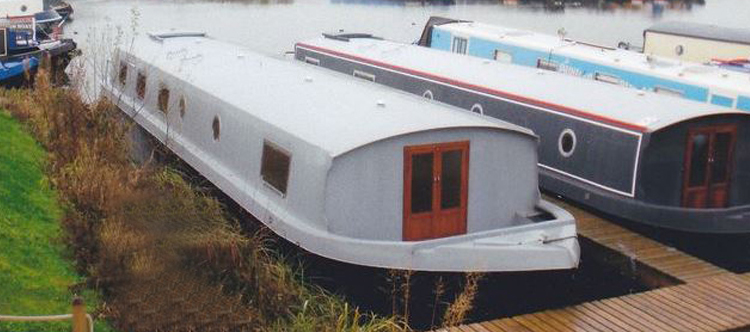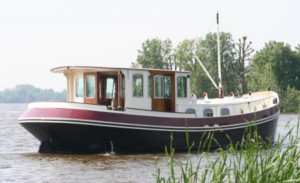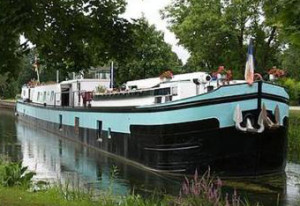
Widebeams – a brief explanation
Yes, I know the website is called ‘Narrowboatinfo’ but it would be remiss of me to ignore a large (no pun intended) section of the boating community just because their boats are bigger than mine! Widebeam boats (and they come in a variety of shapes and types – more of that later) offer a prospective boater a much larger living space on board. Many can appear a little more than floating bungalows and it is why the vast majority of widebeam craft tend to be used as residential boats, rather than occasional weekend cruisers. There are a number of widebeam owners who do cruise the network, but as will become apparent, they are unable to travel all over the country.
Widebeams – Just where can you go?
Virtually all of the UK’s navigable rivers are open to the widebeam-owner, from the River Thames, to the Rivers Severn and Trent. In addition, there are many miles of canals that can be used to get you from one to the other – and a great deal of those allow the widebeam owner to experience the unique delights of the UK canal network for themselves.
Broadly speaking, there are four main cruising areas for the wide beam owner in the UK – London and the South, The River Severn, The Norfolk Broads and the River Trent leading to the North.
Almost every waterway in the UK was built to its own size: some have slightly narrower locks than usual whilst others have lower bridges, creating a barrier to cruising. As a general rule, the canal network gets more restrictive to wide beamed craft, the further up the country you go. There is a wide network in the north, but the interconnecting canals through the Midlands are too narrow for widebeams to navigate, so any owner would need to establish which part of the country they want to cruise, prior to purchasing their boat. Boat moving companies do exist, but the cost of craning and transporting the vessel would need to be taken into consideration when working out your budget.
It is also worth mentioning that some canals could have narrow and shallow channels that may prove restrictive to wide beamed boats, and headroom could well be restrictive to some – missing brickwork on the arches of some bridges around the author are testament to that!
Types of Widebeam
The Luxemotor

A Typical Luxemotor Vessel
This is about the most common Dutch barge style. When Luxemotors were first introduced, they were among the first type of motorised waterways vessels. Until then, barges had always been sailed or pulled along by horses.
Unlike their working counterparts, the Luxemotor offered their owners more space and a greater degree of passenger living accommodation at the stern. The modern-day Luxemotor follows the same basic design, but the original cargo hold has now been given over to living accommodation. On new Luxemotors this is custom built, whilst on more traditional historic vessels, this area has usually been converted.
Narrowboat Style Widebeams
A good number of existing narrowboat builders have started to build widebeam craft to the same design as their narrower counterparts. As mentioned earlier, whilst these are unable to navigate the smaller canals in the Midlands, they do have the advantage of offering very spacious interior accommodation.
Nowadays, narrowboats are often identified by the types of rear deck they have with the cruiser style being very popular among boaters who enjoy company with them on the rear of the boat. Usually, but by no means exclusively, the cruiser style stern tends to be favoured by owners of wide-beam narrowboats. You also tend to find that the roof may be almost entirely flat, in some cases accommodating a temporary seating area – or may be curved slightly to help achieve maximum headroom in the centre of the boat.
Peniche

A French Peniche
A French barge or Peniche (often called a ‘spitz barge’ in the Low Countries of Belgium and Holland) were originally built to fit the French waterways that underwent enlargement in the 1880s. As a result, they tend to share a common dimension of 125ft in length. They were slab sided vessel with a fairly blunt bow and a simple curved stern.
Quite a number still transport cargo around the French Waterways (British Rail please note) but many nowadays have been converted into recreational or residential craft.
Cruising Areas
The Grand Union Canal
I am only going to touch upon one cruising area for the time being; as it is the area I know the best.
As regular boaters will know, the Grand Union Canal formed a link from London to Birmingham, and is regarded as one of the great routes of Britain’ waterways system. It underwent an enlargement programme throughout the 1930s, where it was deepened and rebuilt with the intention of opening up the country for widebeam commercial vessels. Whilst the job was never quite completed, many parts of the southern section of the Grand Union Canal are great for wide beamed vessels and you will see a number of them either moored or cruising in this area.
The Grand Union was originally called the Grand Junction Canal, and a great deal of the heritage of its commercial heyday are still evident, with the pumping stations along its length, its canalside workshops around Braunston, its network of reservoirs, particularly around Tring and Marsworth and its numerous flight of locks, most notably down from the Tring Summit as it begins its descent into London.
One significant disadvantage to the wide beam owner is that due to the proximity of southern sections of the Grand Union Canal to the rail network that gives easy access to London, most types of mooring, whether marina based, long term or residential are in extremely short supply here. Even along the main line (for continuous cruisers) water depth for some boats can be problematic.
